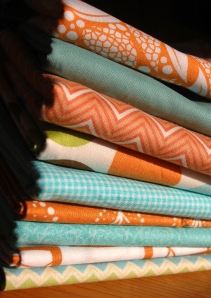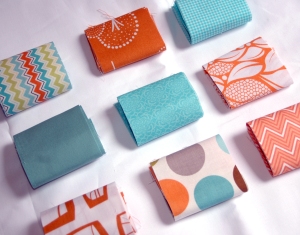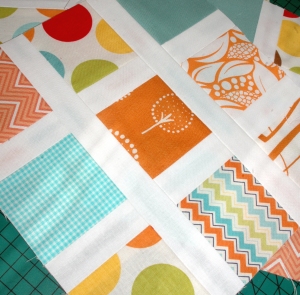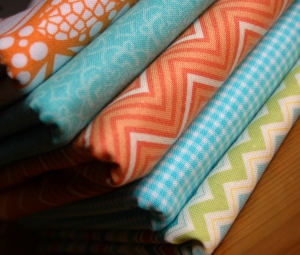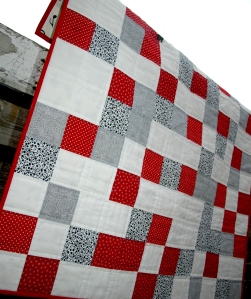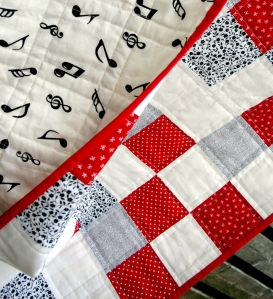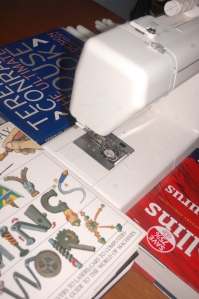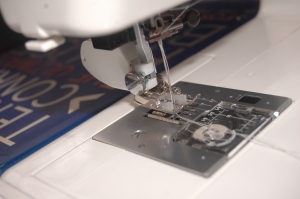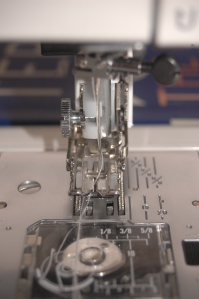One of the things that I love about quilting is that, even with a limited skill set, the possibilities are endless. So far, I haven’t ventured beyond straight lines and right angles, but there are endless possibilities even for those who never want to attempt a curve or a triangle. Here is a round up of some of my favourite, free, straight line, block tutorials.
Square in Square:
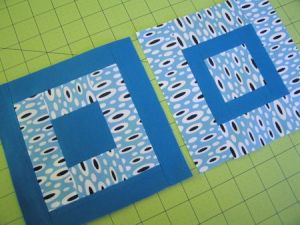
Here’s a basic one explained by Elizabeth Hartman over at her blog, Oh Fransson! (A blog well worth following, by the way) A few small tweaks, such as varying the widths of the fabric or using ‘wonky’ cutting can totally change the look of this block.
Log Cabin Block

The log cabin block is one step up from the square in square, and although it is a traditional design, it is still a firm favourite. Use of modern fabrics instantly bring it up to date and if that’s not enough, creative piecing using negative space certainly gives it a kick. Of course, varying fabric widths or using ‘wonky’ cutting can again result in different looks. Google ‘modern log cabin quilt’ for some ideas. (Man, I really need pinterest to expand on these things) Rita Hodge of Red Pepper Quilts (I love her use of shape and colour!) tells you how to get to grips with this one.
Flying Squares Block
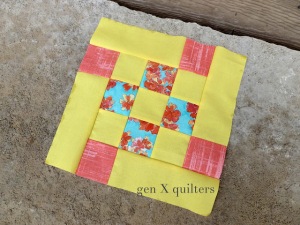
Ann Marie at Gen X quilters developed this nifty little patch to showcase some prints she loved. Don’t be fooled by that saltire at the top of her page, she’s in America! I’ve just come across her blog (there are so many out there) and it’s looking set to become one of my favourites. This tutorial shows that it’s fun to play around and look for the effect you want. Another great thing about quilting is that quilters are always looking for new twists in the ways they bring fabrics together.
Stained Glass Block
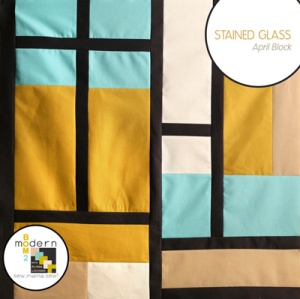
I couldn’t understand where the ‘stained glass’ name came from, until I remembered that churches in the states aren’t generally as old as they are here! I live in a new town too, and the church DOES have stained glass windows just like this, but the church of my childhood was very different. One day I might design a block based on it’s windows, all rich blues and reds with an arc at the top.
This block is featured as part of a sew along at Sew Mama Sew, and at the bottom of the post there is even a pdf download available. (I love the internet!) The blocks are designed by Alyssa Lichner, from Pile o’Fabric, who is guest blogging the series at Sew Mama Sew, which is jam packed with all manner of crafty good stuff, and, of course, you’ll be wanting to keep an eye out there for the rest of the blocks in the series! 🙂 Alyssa’s own blog is well worth checking out too, I especially love her bold fabric combinations and her weekly stash share, where she challenges readers to assemble a bundle of fabrics from a particular colour scheme.
Chunky Pinwheel
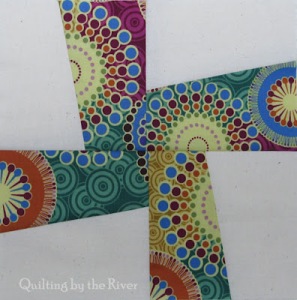
One favourite trick of modern quilters is to use off-square cuts. (I can’t think of a better way to describe what I mean, even though I’m sure it’s not quite accurate!) Here’s a lovely, simple pinwheel block that I can’t wait to have a go at, put together by Connie at Freemotion by the River. In fact, it’s actually a whole quilt tutorial. I think the white background and simple geometric design really shows off those fabrics.
Scrappy Cross
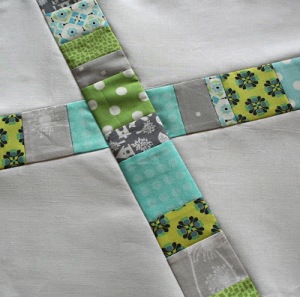
I’ve noticed a lot of quilts featuring crosses, and anything ‘scrappy’ is a great way to use up those tiny leftovers. Fabric is such a precious commodity, and not just in monetary terms, that quilters are often loathe to part with even the smallest scraps. I like that, it’s almost a homage to all the quilters of generations gone by, who used and reused fabric from other sources and still created something beautiful. Quilting is, in my opinion, an art, but it has got it’s feet firmly on the ground.
This intuitive block is brought to you by Charlotte at Lawson and Lotti, and, as she says, it could easily be built up into something more complex, or scaled up to make a whole quilt.
All the above blogs have other tutorials posted, this is just a jumping off point. Have a rummage, find something you like, have a go!
Perhaps you already have a favourite block? Or maybe you have little tricks you use to personalise a block? Let me know in the comments, I’d love to hear!
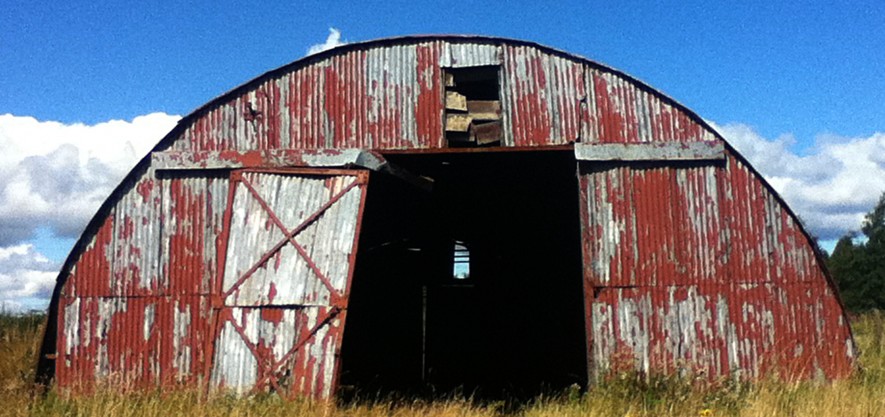
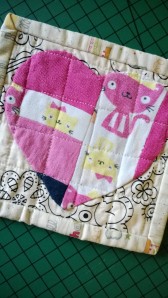
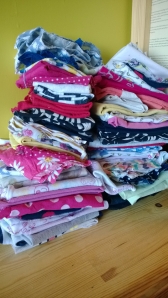
 I’m making good progress with Oliver’s quilt. I accidentally came across a quilt as you go method from Maureen Cracknell that I really liked, and this quilt seemed ideal to try it out on. Basically, you quilt the blocks to the batting and then sew all the blocks together. She then bastes the backing on and quilts it beside the seams where the quilt is joined. On paper, this method seems to have a lot of advantages. Five blocks out of the nine have now been quilted, and the backing and binding fabrics I ordered on Monday came today, so if I’m not finished in time for Christmas, there is something wrong!
I’m making good progress with Oliver’s quilt. I accidentally came across a quilt as you go method from Maureen Cracknell that I really liked, and this quilt seemed ideal to try it out on. Basically, you quilt the blocks to the batting and then sew all the blocks together. She then bastes the backing on and quilts it beside the seams where the quilt is joined. On paper, this method seems to have a lot of advantages. Five blocks out of the nine have now been quilted, and the backing and binding fabrics I ordered on Monday came today, so if I’m not finished in time for Christmas, there is something wrong! 